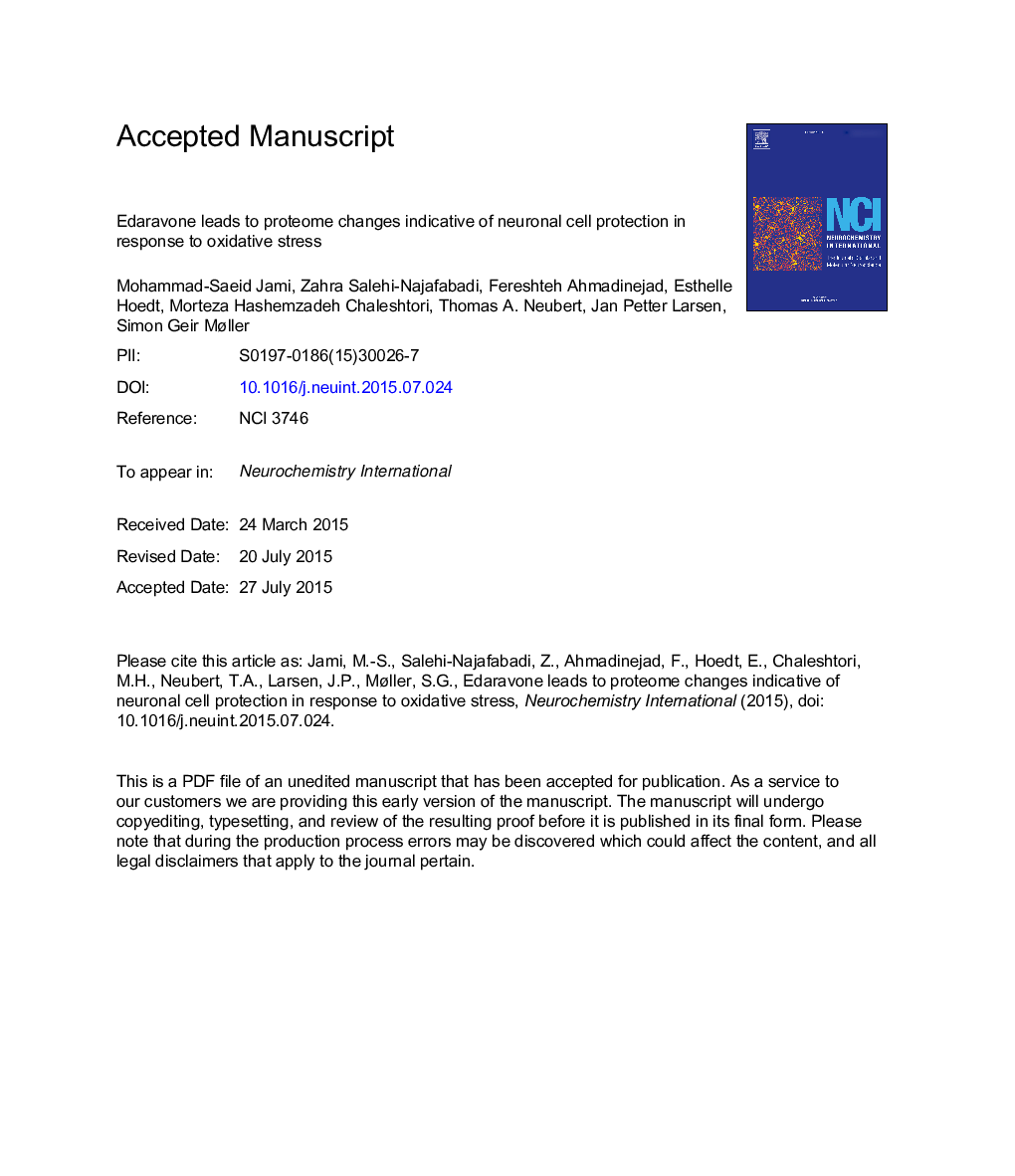| Article ID | Journal | Published Year | Pages | File Type |
|---|---|---|---|---|
| 8479120 | Neurochemistry International | 2015 | 31 Pages |
Abstract
Neuronal cell death, in neurodegenerative disorders, is mediated through a spectrum of biological processes. Excessive amounts of free radicals, such as reactive oxygen species (ROS), has detrimental effects on neurons leading to cell damage via peroxidation of unsaturated fatty acids in the cell membrane. Edaravone (3-methyl-1-phenyl-2-pyrazolin-5-one) has been used for neurological recovery in several countries, including Japan and China, and it has been suggested that Edaravone may have cytoprotective effects in neurodegeneration. Edaravone protects nerve cells in the brain by reducing ROS and inhibiting apoptosis. To gain further insight into the cytoprotective effects of Edaravone against oxidative stress condition we have performed comparative two-dimensional gel electrophoresis (2DE)-based proteomic analyses on SH-SY5Y neuroblastoma cells exposed to oxidative stress and in combination with Edaravone. We showed that Edaravone can reverse the cytotoxic effects of H2O2 through its specific mechanism. We observed that oxidative stress changes metabolic pathways and cytoskeletal integrity. Edaravone seems to reverse the H2O2-mediated effects at both the cellular and protein level via induction of Peroxiredoxin-2.
Related Topics
Life Sciences
Biochemistry, Genetics and Molecular Biology
Cell Biology
Authors
Mohammad-Saeid Jami, Zahra Salehi-Najafabadi, Fereshteh Ahmadinejad, Esthelle Hoedt, Morteza Hashemzadeh Chaleshtori, Mahdi Ghatrehsamani, Thomas A. Neubert, Jan Petter Larsen, Simon Geir Møller,
